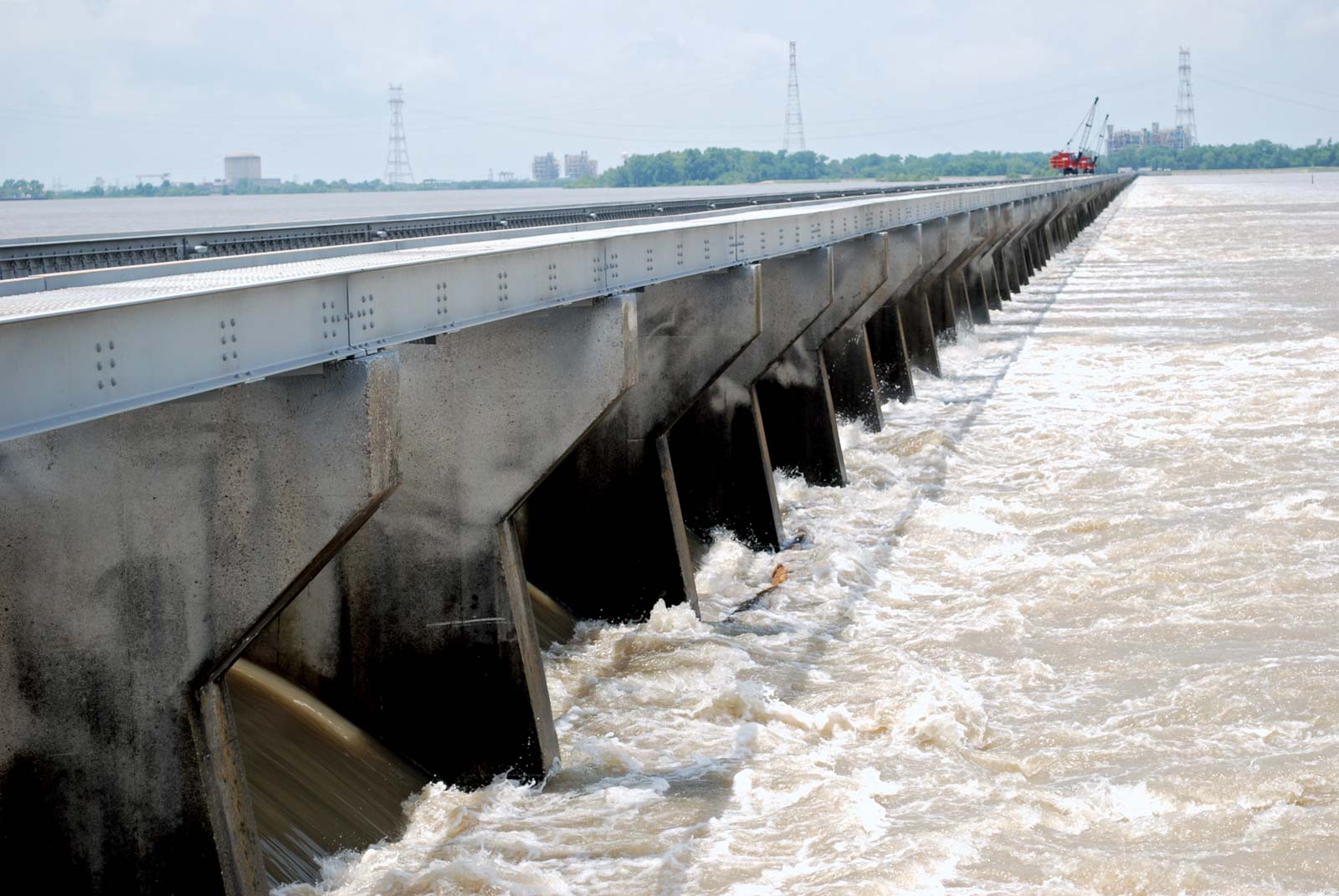The U.S. Army Corps of Engineers (the Corps) is a federal agency located within the Department of the Army in the Department of Defense. The Corps’ mission is to “deliver vital public and military engineering services; partnering in peace and war to strengthen our Nation’s security, energize the economy and reduce risks from disasters.” The majority of the Corps’ work in Louisiana is through their Civil Works missions, including Flood Risk Management, Navigation, Regulatory, and Environmental. The Corps is divided into regional (division) and local (district) offices. The Mississippi Valley Division (Vicksburg, MS) and the New Orleans District manage Louisiana. The Mississippi River Commission also manages some issues along the Mississippi River. It is a commission led by the Corps and some civilian, non-Corps members, which manages issues along the whole Mississippi River.
In Louisiana, some notable Corps projects include the hurricane protection system of New Orleans (the Hurricane Storm Damage Risk Reduction System), the Mississippi River levees, the Bonnet Carre and Morganza spillways, and the dredging of navigational channels (including the Mississippi River channel). The Corps also issues national permits for projects through their Regulatory department, most notably the 404 permits (allowing fill or dredged material into waters of the US) and the 408 permits (permitting the alteration of a Corps Civil Works project). They also develop Environmental Impact Statements for large non-federal projects through NEPA (notably, they will issue the final EIS for the mid-basin diversions being constructed by the State).
Funding for Corps projects is distributed through appropriations of the U.S. Congress during the regular Congressional budget process as well as disaster supplemental bills passed after major natural disasters. Disaster supplemental bills appropriate money to regions that were recently affected by natural disasters. Recently, disaster supplementals have been passed almost every year.
Corps projects must be authorized before Congress appropriates funding. Authorizations occur through regular Water Resources Development Acts (passed about every 2 years). To create a new Corps project, they are usually first proposed by local entities or the Corps itself. The proposed project undergoes a feasibility study, and if appropriate, they can be authorized as projects after that process. Before a project is built, it usually needs a feasibility study. Feasibility studies are cost-shared by the local cost-share sponsor, which is typically the state. A feasibility study determines if a project is economically and scientifically feasible to complete. It can sometimes take decades for a project to go from concept to construction. Before CPRA existed, most coastal restoration and protection projects were conducted by the Corps. Today, the Corps is an important partner with the State to help rebuild and protect coastal Louisiana.

Points of Contact
-
- US Army Corps of Engineers, Commander & District Engineer New Orleans District, Col. Cullen Jones
- US Army Corps of Engineers, Deputy District Engineer for Project Management, Durund Elzey
- MRD Contact
- Restore the Mississippi River Delta contact, Campaign Director, Simone Maloz: smaloz@mississippiriverdelta.org
